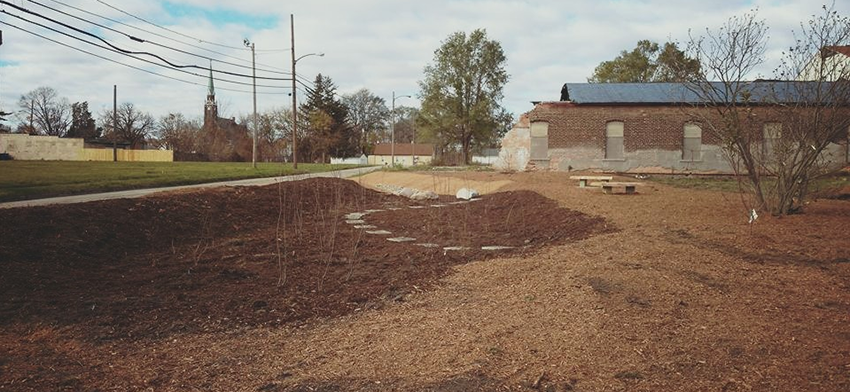 In September 2016, TMACOG, with support from Partners for Clean Streams, the Lake Erie Protection Fund, and the MAAC, completed the Hoag Street Rain Garden project. The purpose of the project was to demonstrate the feasibility and benefits of repurposing urban areas into green stormwater features, like rain gardens. The rain garden has reduced the amount of water entering the nearby combined sewer system and serves as a holding facility to treat runoff from the surrounding urban area. To see pictures of before, during, and after construction of the rain garden, click here. It was also deemed important that the community members near the project area, known as Junction Coalition, be included in the decision-making processes for the project. They helped select the project site and provided ideas for the types of plants and other features that the rain garden would have.
In September 2016, TMACOG, with support from Partners for Clean Streams, the Lake Erie Protection Fund, and the MAAC, completed the Hoag Street Rain Garden project. The purpose of the project was to demonstrate the feasibility and benefits of repurposing urban areas into green stormwater features, like rain gardens. The rain garden has reduced the amount of water entering the nearby combined sewer system and serves as a holding facility to treat runoff from the surrounding urban area. To see pictures of before, during, and after construction of the rain garden, click here. It was also deemed important that the community members near the project area, known as Junction Coalition, be included in the decision-making processes for the project. They helped select the project site and provided ideas for the types of plants and other features that the rain garden would have.
Partners for Clean Streams is the fiscal agent for a small pot of money to support beneficial projects in the Maumee Area of Concern. In years past, when a business was cited by the Ohio EPA or the City of Toledo for violating some environmental rules, the business could negotiate putting money into a Supplemental Environmental Project (SEP) instead of only fines. These funds were held in a separate account, often with specific rules for how they could be spent. Partners for Clean Streams worked to find projects that would benefit the area and meet the criteria outlined in the SEPs. In 2015, PCS worked with Ohio EPA and the Maumee AOC Advisory Committee to issue a small request for proposals. By combining some of the smaller SEP funds into larger chunks with common goals and requirements, PCS, with input from the MAAC, was able to fund this rain garden project led by TMACOG for nearly $10,000 (which was part of the funding needed for the project). Not only has the Hoag Street Rain Garden project improved the aesthetics of a vacant lot, it also serves as an example of successful green infrastructure for community members and city officials. Most importantly, the rain garden is functional in improving the quality of water leaving the site and entering the larger system that eventually leads to Lake Erie.
